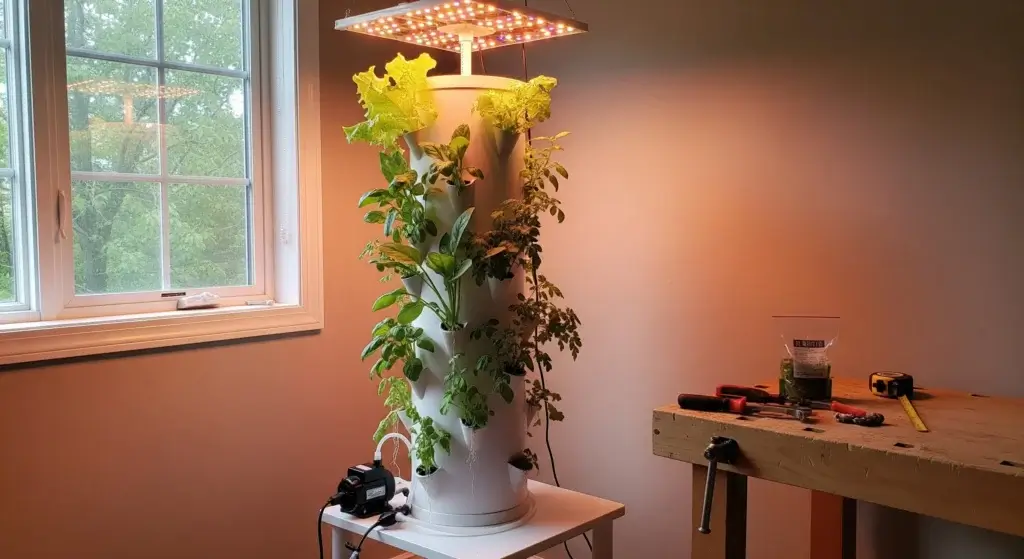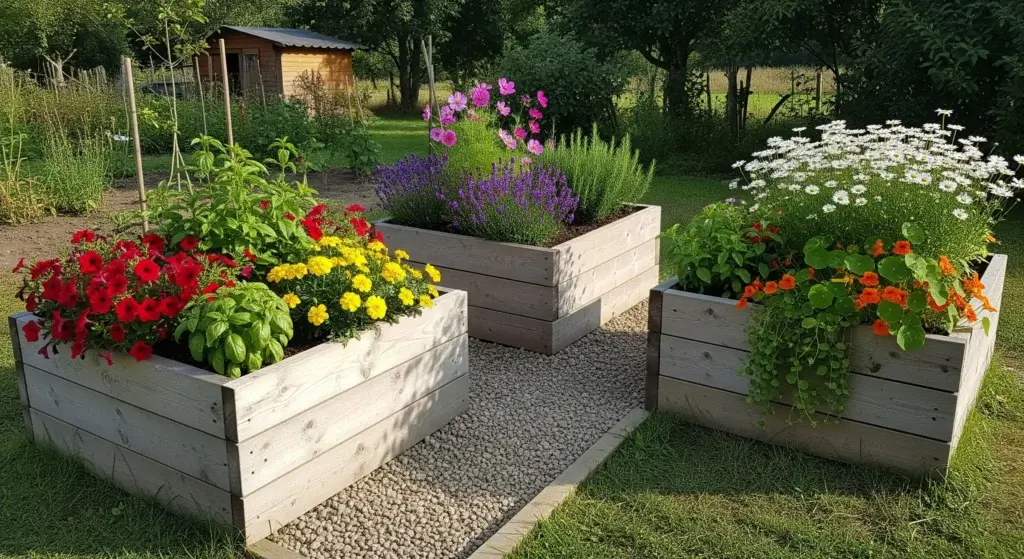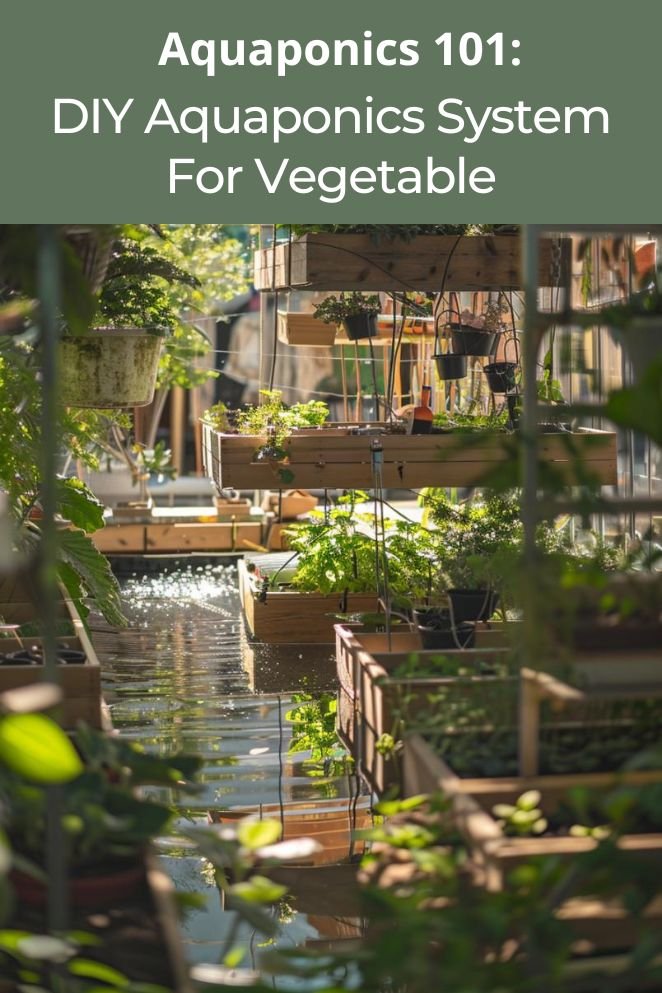
Aquaponics is a fascinating and sustainable way to grow vegetables and raise fish together.
By combining the principles of hydroponics and aquaculture, you can create a thriving ecosystem that produces fresh, healthy produce while also providing a source of protein.
In this article, we will guide you through the process of building a DIY aquaponics system for vegetables, covering planning, building, and maintaining your system.
Planning Your Aquaponics System
Before you dive into constructing your aquaponics system, taking the time to plan thoughtfully ensures a smooth and successful process.
Here’s a detailed guide to help you navigate the planning stage:
- Read also: Balcony to Farm Fresh: DIY Vegetable Garden on a Balcony
- Read also: Grow Anywhere: DIY Container Ideas For Vegetables
Choosing a location
Selecting the right spot sets the stage for your aquaponics adventure. Here’s what to consider:
- Light: Plants need sunlight to thrive, so aim for a location that receives 4-6 hours of direct sunlight daily.
- Temperature: Keep the temperature between 65°F and 85°F (18°C and 30°C) to keep your fish and plants happy.
- Space: Assess your available space and plan the size of your system accordingly. A good rule of thumb is to allocate about 1 square foot of grow bed space per plant to ensure ample room for growth.
Selecting fish and vegetables
Choose fish and plants that will thrive in your aquaponics setup, especially if you’re new to the process:
- Fish: Goldfish and tilapia are popular choices because they’re hardy and adaptable to controlled environments.
- Vegetables: Focus on leafy greens, herbs, and cherry tomatoes, as they’re well-suited for aquaponics and relatively easy to grow.
Materials list
Gather all the materials you’ll need to bring your aquaponics vision to life:
- Fish tank or container: Whether it’s a 10-20 gallon aquarium or a purpose-built aquaponics tank, choose a container that suits your space and needs.
- Grow bed containers: Get creative with buckets, tubs, or other containers with drainage holes to serve as your plant beds.
- Waterproof lining (optional): If you’re concerned about water leakage, line your grow beds with waterproof material for added peace of mind.
- Media for grow beds: Use clay pebbles, expanded clay, or a similar medium to support your plant roots and promote healthy growth.
- Water pump: Invest in a reliable water pump to keep the water circulating between your fish tank and grow beds.
- Tubing and connectors: Make sure you have the right tubing and connectors to connect your water pump and ensure smooth water flow throughout your system.
- Timer (optional): Consider adding a timer to automate lights and maintain consistent environmental conditions for your aquaponics setup.

Building Your Aquaponics System
Now comes the exciting part – turning your vision of an aquaponics system into reality.
Let’s embark on this journey together, step by step, ensuring each detail is crafted with care and precision:
Setting up the fish tank
Clean and prepare the tank
As you prepare the tank, envision it as a sanctuary for your aquatic companions.
Carefully cleanse every nook and cranny, ensuring it’s a pristine environment for your fish to thrive.
Adding a layer of gravel or media not only provides stability but also creates a natural substrate reminiscent of their native habitat.
Add water conditioner and beneficial bacteria
Introduce your fish to their new home with a splash of water conditioner, gently removing any traces of chlorine or chloramines that could disrupt their delicate balance.
With the addition of beneficial bacteria, you’re laying the groundwork for a harmonious ecosystem where fish and plants coexist in perfect symbiosis.
Choose and stock fish
Now, it’s time to select your finned companions – each one a unique personality to enrich your aquaponic ecosystem.
Consider their individual needs and personalities, ensuring they’re compatible with the environment you’ve created.
With thoughtful consideration, introduce them to their new home, where they’ll play a vital role in the cycle of life.
Creating the Grow Beds
Drill drainage holes
As you prepare the grow beds, imagine them as fertile fields waiting to embrace your plants’ roots.
With each hole drilled, you’re ensuring proper drainage – a vital aspect of plant health.
This attention to detail sets the stage for lush greenery to flourish and thrive.
Add a liner (if Using)
Just as you protect and nurture your fish, safeguard your surroundings by lining the grow beds with a waterproof barrier.
This extra layer of protection ensures that your aquaponic oasis remains contained, preventing any water seepage and preserving the beauty of your indoor sanctuary.
Add grow media
Now, it’s time to lay the foundation for your plant kingdom.
Fill the grow beds with nurturing media, each granule a testament to the support and care your plants will receive.
With their roots nestled snugly within, they’ll draw sustenance and strength from this fertile environment, reaching ever closer to the light above.
Positon grow beds
Like a painter arranging their canvas, position the grow beds with careful consideration.
Above the fish tank, they’ll create a seamless flow of life-giving water, each bed a stepping stone in the journey from fish waste to plant nourishment.
Securely in place, they’re poised to become the stage for nature’s most captivating performance.
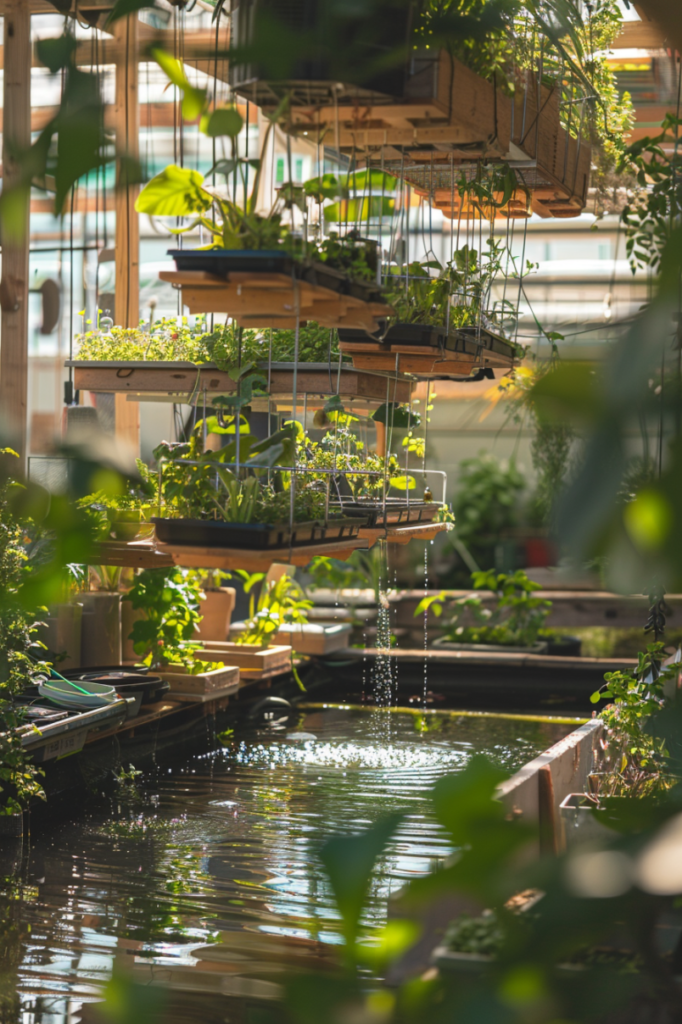
Connecting the System
Install the water pump
With the gentle hum of the water pump, you’re connecting two worlds – fish and flora – in a delicate dance of life.
As it pulses with energy, circulating water between tank and bed, it becomes the heartbeat of your aquaponic ecosystem, sustaining and nurturing life with each rhythmic beat.
Create a continuous water flow
Stand back and witness the magic unfold as water flows seamlessly through your system, a never-ending cycle of growth and renewal.
With each journey from fish tank to grow bed and back again, it carries with it the promise of vitality and abundance, a testament to the beauty of nature’s interconnectedness.
Planting and Maintenance
Now that your aquaponics system is set up, it’s time to embark on the exciting journey of planting and maintaining your vegetable garden.
Let’s explore the essential tasks to ensure the health and vitality of your thriving ecosystem:
Planting your vegetables
- Choose suitable seeds or seedlings: Just as you carefully selected your fish, take the time to choose seeds or seedlings that will thrive in your aquaponics setup.
- Plant directly in grow media: With gentle hands, plant your selected seeds or seedlings directly into the grow media.
- Start seeds in trays (optional): For seeds starting their journey, provide them with a nurturing environment to sprout and thrive.
Maintaining your system
- Monitor water quality: Keep a close eye on the health of your aquaponic ecosystem by regularly testing the water for pH, ammonia, and nitrate levels.
- Adjust water levels: Like a conductor orchestrating a symphony, fine-tune the water levels to ensure a smooth flow throughout your system.
- Add nutrients (if needed): Pay attention to the health and vitality of your plants. If signs of nutrient deficiency appear, supplement the water with appropriate nutrients to support their growth and development.
- Feed fish and keep the system clean: Show your fish the care they deserve by providing them with a balanced diet and maintaining a clean environment.
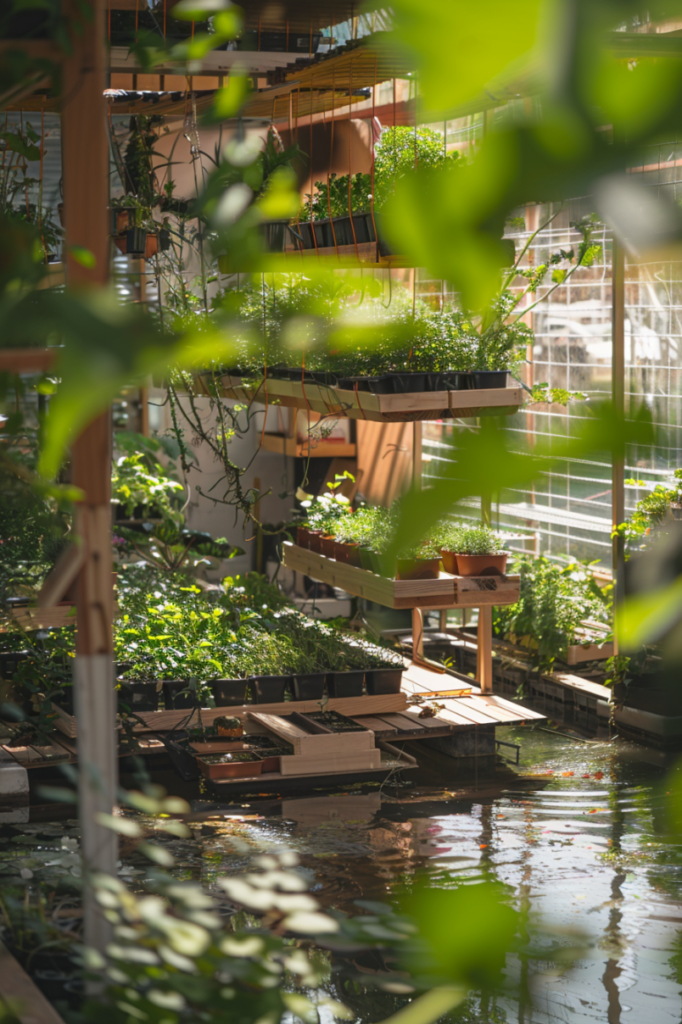
- Read also: Grow Your Own! DIY Vegetable Garden for Beginners
- Read also: DIY Vegetable Garden Box: Build Your Own Veggie Oasis
Conclusion
Constructing a DIY aquaponics system for vegetables offers a fulfilling and eco-friendly approach to cultivating your own food.
By adhering to these steps and taking into account the essential factors detailed in this guide, you’ll be able to establish a flourishing ecosystem that yields nutritious produce and serves as a sustainable protein source.
Enjoy the process of building your system!


